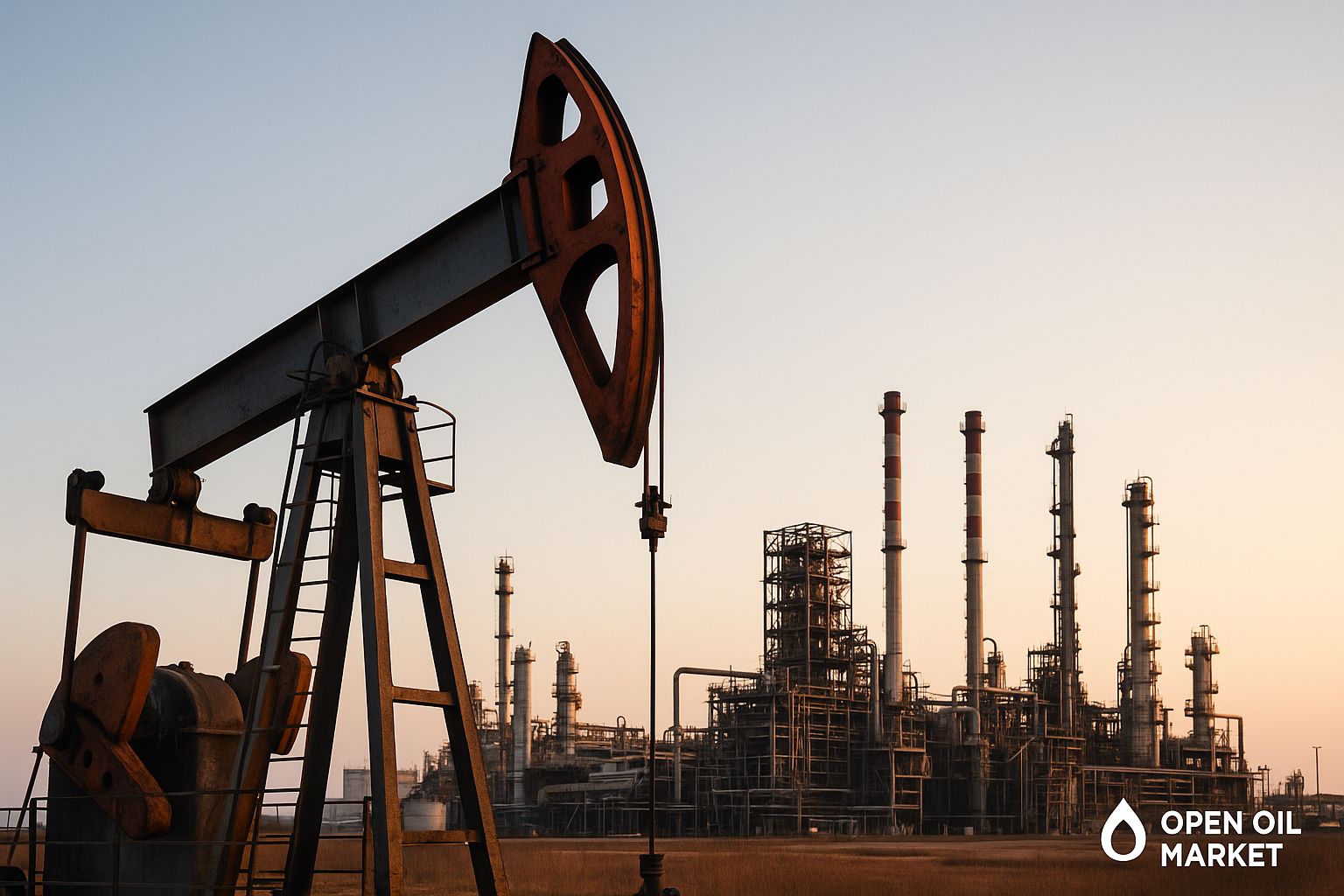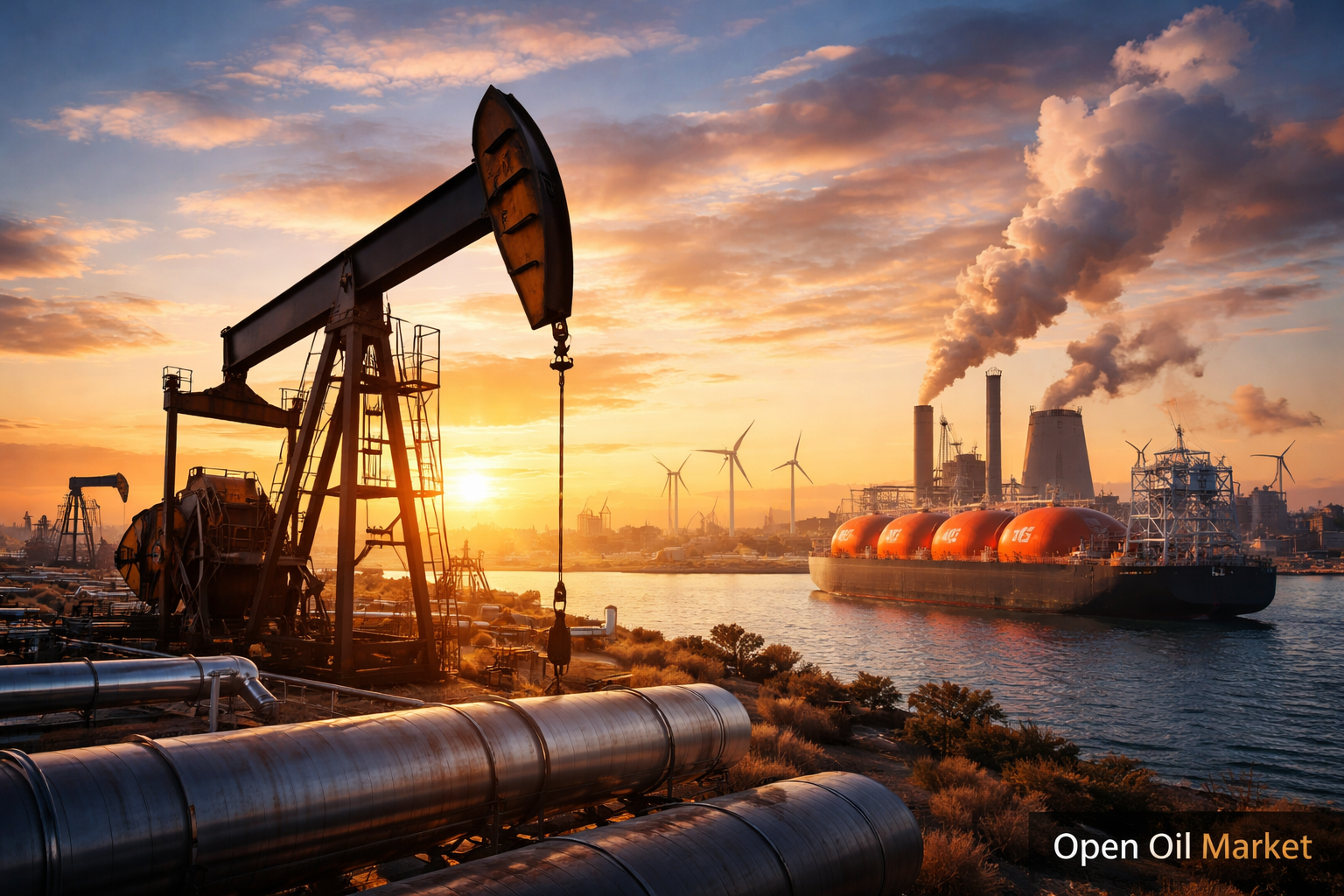
Overview of News in the Fuel and Energy Sector for Monday, October 27, 2025: Sanction Pressure on the Energy Sector, Stabilization of the Domestic Fuel Market, Record Gas Reserves in Europe, and Record Investments in Renewable Energy.
Current events in the fuel and energy sector as of October 27, 2025, unfold against the backdrop of ongoing sanctions standoff between Russia and Western countries, as well as in anticipation of the winter season. Sanction pressure from the West remains strong: last week, the United States imposed direct sanctions against major Russian oil and gas companies, urging allies to completely abandon trade in Russian energy resources. The European Union has approved yet another package of restrictions aimed at the Russian energy sector, closing remaining loopholes (including a ban on re-exporting petroleum products made from Russian crude through third countries). The United Kingdom has expanded its sanctions list to include leading Russian oil companies, as well as some Chinese refining and shipping firms that were helping Moscow circumvent the embargo.
Under intense diplomatic pressure from the West, India – a key buyer of Russian oil – announced its readiness to gradually reduce imports of crude from Russia (market data suggests that a reduction in purchases may begin as early as December). A similar call has been made to China. Officially, New Delhi and Beijing have yet to confirm a sharp reduction in purchases, emphasizing the priority of energy security, but even hints of a shift in position are increasing uncertainty in the oil market and pushing Moscow to actively seek new buyers for its exports.
Simultaneously, global commodity markets are demonstrating relative stability. Oil prices remain near multi-month lows: Brent has stabilized in the range of $60–62 per barrel after a recent dip below $60, supported by an abundance of supply in the market. The European gas market approaches winter with record fuel reserves – underground gas storage in the EU is over 95% full – which has helped reduce wholesale prices to comfortable levels (TTF index around €30 per MWh). In the absence of extreme cold, Europe expects to get through the winter season without gas shortages and sharp price fluctuations.
Against this backdrop, the global energy transition is gaining momentum. Investments in renewable energy are hitting historic records and have already surpassed investments in fossil fuel extraction. The share of clean energy sources (solar, wind, hydro, and other green energy) in global electricity generation is steadily increasing. At the same time, oil, gas, and coal still play a key role in meeting current demand and ensuring energy security, remaining the foundation of the global energy balance during the transition period.
In Russia, the situation in the domestic fuel market has noticeably stabilized due to emergency measures taken by the government earlier this fall. By the end of October, the acute shortage of gasoline and diesel that was observed in late summer has largely been resolved: wholesale prices have retreated from peak levels, independent gas stations in most regions have resumed normal sales, and fuel supplies have returned to normal. Authorities continue to closely monitor the situation ahead of winter, maintaining export restrictions on petroleum products and measures to support refining to ensure uninterrupted supply to the domestic market.
Below is an overview of key news and trends in the oil, gas, electricity, renewable, and coal sectors, as well as on the Russian fuel market as of today.
Oil Market: Supply Surplus and Sanction Risks
Global oil prices remain under pressure due to an oversupply and slowing demand. Brent quotes are holding around $60 per barrel, significantly lower than levels a month ago and close to the minimum values since the beginning of the year. The market expects that by the end of the year, oil supply will exceed demand: OPEC+ countries continue to ramp up production, while outside the cartel, record volumes are being produced by the US, Brazil, and other major producers. Meanwhile, global oil consumption is slowing down amid weak economic dynamics in Europe and China, as well as after a period of high prices, resulting in rising global oil inventories which exert downward pressure on quotes.
- Sanctions and Geopolitical Instability. Enhanced Western sanctions against the Russian oil sector are fueling uncertainty: the US and Europe have effectively charted a course for a total embargo on Russian energy resources, imposing restrictions against companies, the tanker "shadow fleet," and intermediaries. Military risks persist as well – Ukrainian drone attacks on Russian oil infrastructure periodically incapacitate individual refineries and pipelines. Any serious escalation could tighten oil supply in the market and provoke a price spike, despite the overall surplus.
- India and Redirecting Flows. The largest importer of Russian oil, India, may reduce its fuel purchases from Russia under external pressure. Russian crude accounted for over 30% of India's imports, so a withdrawal from it would force Moscow to redirect these volumes to other markets or cut production. It is expected that the volumes lost for India, if necessary, will be replaced by suppliers from the Middle East, Africa, and the Americas, preventing a global shortage. However, for Russian oil companies, losing the Indian market would mean a reduction in export revenue and heightened competition for Asian buyers. For now, India and China continue to purchase significant volumes of Russian oil, providing some support for Russian exports.
Forecasts: Analysts believe that a level of around $60 per barrel for Brent serves as a sort of lower boundary in the current conditions. The oversupply prevents oil prices from rising significantly; however, sanction and geopolitical risks, along with OPEC+'s readiness to cut production if necessary, create a supportive factor and prevent quotes from slipping substantially below this level. Market participants are taking a cautious stance, assessing the balance of risks and waiting for signals about further actions from major producers.
Natural Gas: Record Reserves in Europe and the Eastern Pivot of Russian Exports
The European gas market is confidently entering the winter period. Underground gas storage in the EU is filled to record levels, creating a solid reserve in case of cold weather. Thanks to this and the active import of liquefied natural gas (LNG) in the fall (significant volumes of LNG from the US, Qatar, and other countries have entered Europe due to reduced demand in Asia), wholesale gas prices remain low. The TTF exchange index has stabilized around €30 per MWh, which is several times lower than the peak values of autumn 2022. The risk of a gas shortage this winter has significantly decreased, although consumer comfort will ultimately depend on weather conditions and the uninterrupted supply of LNG.
For Russia, the loss of the European gas market has driven accelerated reorientation of exports to the East. Pipeline gas supplies to China via the "Power of Siberia" pipeline have reached record volumes this year, closely approaching the project's capacity. Concurrently, the second phase of the "Power of Siberia-2" gas pipeline project through Mongolia is being promoted, aimed at further increasing Russian gas exports to China. Russian LNG sales are also on the rise: the launch of new production lines in Yamal and Sakhalin has enabled additional liquefied gas shipments to China, India, and several other Asian countries. Nevertheless, the total gas export from Russia remains lower than pre-sanction levels, and it is impossible to fully replace the European market in terms of volume and infrastructure in the short term. Russian gas companies are actively increasing infrastructure in the eastern direction and signing long-term contracts in Asia, striving to cement their presence in rapidly growing Eastern markets.
Renewable Energy: Record Growth and Integration Challenges
The renewable energy sector is experiencing rapid growth. By the end of 2025, renewable energy could account for about one-third of total global electricity generation, closely approaching coal's generation volume. Public and private investments in "green" energy are at record highs, already surpassing investments in oil and gas extraction projects. This surge is incentivized by state support programs, technological progress, and the desire of countries to reduce dependence on hydrocarbons.
However, the rapid development of solar and wind generation is accompanied by new challenges. Energy systems require increasingly more capacity for energy storage and reserve generation, as renewable sources exhibit variable production. The development of grid infrastructure is not keeping pace in all areas with the deployment of new renewable energy stations: in some regions, limited capacity of power grids and a lack of qualified specialists are slowing down the connection of new capacities. Some energy companies are already facing the necessity to occasionally limit renewable generation due to grid overloads. To ensure further sustainable growth of "green" energy, governments and businesses must tackle integration challenges—from building modern storage systems and modernizing grids to training specialists for the new energy landscape.
Coal Sector: High Demand in Asia and Accelerated Phase-Out in the West
In 2025, the global coal market is demonstrating a dual dynamic. In Asian countries, strong demand for coal persists, supporting global prices and production. This summer, anomalous heat and temporary disruptions in mining operations forced China and several other East Asian countries to sharply increase coal imports for power plants, preventing prices from dropping and keeping them at relatively high levels. Major coal companies continue to generate significant revenue from the Asian market, offsetting decreased interest in the West.
Simultaneously, developed economies are rapidly phasing out coal generation. In Europe, North America, and several other regions, old coal-fired power plants are being decommissioned en masse, hardly any new ones are being built, and the share of coal in electricity production has already dropped to around 25% and continues to fall. In the context of expected long-term demand reduction, many coal mining companies are diversifying their businesses (investing in related sectors, such as metallurgy or rare earth resources) and optimizing costs in preparation for a smaller market. Governments are developing support programs for mining regions to mitigate the socio-economic consequences of the energy transition. The global trend is unequivocal: the role of coal will steadily decline as the climate agenda is implemented and global energy transitions to low-carbon technologies.
Russian Fuel Market: Stabilization After Crisis and Priority on Domestic Market
The domestic petroleum market in Russia has largely overcome the autumn supply crisis. Emergency measures taken by the government in September–October have eliminated the shortage of gasoline and diesel that sharply manifested at the end of summer. Wholesale prices for motor fuel have significantly decreased from peak values in August, independent gas stations have resumed full operations, and supply of gasoline and diesel has returned to normal in most regions. To prevent a new surge in problems, authorities have extended a complete ban on exporting gasoline to the end of the year and maintained strict quotas on diesel fuel exports. The mechanism of the "fuel damper," under which the state compensates refiners for the difference between export and domestic prices, continues to encourage maximum supply to the domestic market.
The government has demanded that oil companies increase output of light petroleum products ahead of the winter season, postponing non-critical repairs at refineries. Simultaneously, customs duties on gasoline and diesel imports have been temporarily eliminated (until mid-2026) to attract additional fuel volumes from abroad if necessary. Control over the situation in the retail market has been intensified: the Federal Antimonopoly Service (FAS) is suppressing instances of unjustified price increases at gas stations, while trying to avoid direct administrative intervention in pricing.
As a result, production of motor fuels in Russia has stabilized at a sufficient level, and the country's current needs are fully met. The government assures that the measures taken in the fall are adequate to get through the winter without supply disruptions of gasoline and diesel. Restrictions on petroleum product exports will only gradually be lifted as the internal market stabilizes and necessary fuel reserves are formed. Despite temporary losses in export revenue, oil companies' losses are partially compensated by damping payments and stability of domestic sales. The 2025 crisis has revealed vulnerabilities in the industry—from a lack of storage capacity and logistical bottlenecks to insufficient refining depth. These issues have been placed under special government control: modernization of fuel storage and distribution infrastructure has begun, and incentives are being considered to enhance refinery efficiency. Thus, the Russian fuel and energy sector is approaching winter under increased state oversight, and the stability gained in the domestic fuel market strengthens confidence among market participants and investors.




